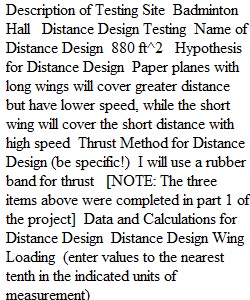


Q As instructed in Module 6 Paper Airplane Project Part 2 - Glider Design Testing: in this location, submit your completed glider design testing worksheet by the end of the module. Turnitin for Student Activity Your paper will automatically be evaluated through Turnitin when you submit your assignment in this activity. Plagiarized answers, or answers that are highly paraphrased, will not receive credit. Submissions containing a significant amount of plagiarized material will receive a score of zero and could prompt academic integrity violation procedures through the University. Knowledge Assessment This activity supports Module Objective 7 and Learning Outcomes 1, 2, 4, and 5.
View Related Questions